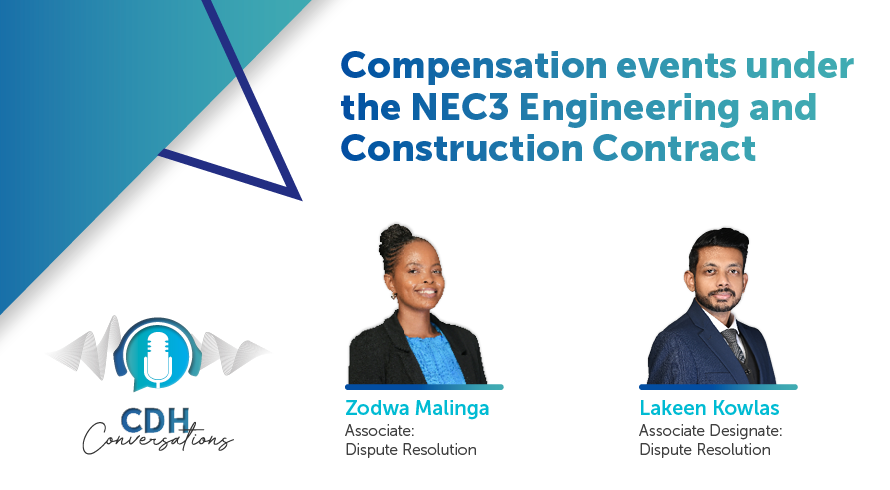Let the author speak: A reminder on admission of documentary evidence
At a glance
- In the context of documentary evidence, a recent Supreme Court of Appeal judgment (Rautini v Passenger Rail Agency of South Africa) emphasized the importance of proving the authenticity and originality of discovered documents to ensure their admissibility as evidence.
- The inclusion of a statement like "all discovered documents are what they purport to be" in pre-trial minutes serves the purpose of discovering documents as real evidence, but it does not automatically make their contents admissible without proper authentication.
- Litigants should be vigilant and ensure that the authors of discovered documents are called as witnesses if they intend to rely on the contents of those documents, as failing to do so may result in the documents being considered hearsay evidence and their admissibility being compromised.
In this vein, a trend which has surfaced in employment and labour law practice (as well as other litigious matters) is the inclusion of a statement along the lines of "all discovered documents are what they purport to be" in pre-trial minutes.
A recent Supreme Court of Appeal (SCA) judgment considered this very statement in the context of documentary evidence.
For the sake of context, in South African law of evidence there are various categories of evidence. For the purposes of this alert we must distinguish between real evidence and documentary evidence. Essentially, the purpose for which the evidence is being used determines whether it is documentary or real evidence. If the contents are being relied upon, the evidence is documentary; if the item itself (i.e. as an object) is to be considered, then it is real evidence.
For example, a labour law textbook can be both documentary and real evidence. If the existence of the textbook itself is in question, the book can be admitted as real evidence. However, if the contents of the textbook form part of the evidence, then it is documentary in nature.
Admitting documentary evidence requires originality and authenticity to be proven. Often, the author of the book or document will be called to testify to confirm its originality and authenticity.
Relying on document contents
In the unanimous judgment of Rautini v Passenger Rail Agency of South Africa (Case no. 853/2020) [2021] ZASCA 158 (8 November 2021), the SCA addressed the issue of reliance on the contents of discovered documents.
The appellant, Mr Rautini, claimed damages from the respondent, the Passenger Rail Agency of South Africa (PRASA), for injuries sustained during an incident on 19 November 2011.
While the trial court found in favour of Rautini, an appeal to the full bench of the High Court succeeded and the High Court dismissed Rautini's claim – hence his appeal to the SCA.
In his appeal, the court noted that Rautini was the only witness to give evidence on how the incident happened.
The facts are as follows: Rautini boarded a train at Du Toit station on his way to work. The train doors were open during the entire journey. Just before reaching the Lynedoch station, where Rautini usually disembarked, three men appeared. Using a knife and gun they threatened the passengers and demanded their cell phones.
In a scuffle with one of the men, Rautini was thrown from the moving train.
Rautini later regained consciousness at the Paarl General Hospital, but could not remember where exactly he fell from the train. Despite witnesses being called, they could not shed any light on how the incident occurred.
Notably, in terms of the evidence, Rautini discovered medical and ambulance reports. However, neither party led the evidence of the authors of those reports.
Documentary or hearsay evidence
The full bench of the High Court rejected Rautini's version since it was inconsistent with the version contained in the medical and ambulance reports. The High Court relied on the notes contained in the medical records as credible and acceptable. Essentially, the High Court admitted the medical and ambulance reports as documentary evidence.
However, it is trite law that if evidence is not led to prove the authenticity and originality of documentary evidence, such evidence will only qualify as hearsay evidence.
Section 3(4) of the Law of Evidence Amendment Act 45 of 1988 defines evidence as;
"evidence, whether oral or in writing, the probative value of which depends upon the credibility of any person other than the person giving such evidence".
Hearsay evidence is only admissible in very limited circumstances and is presumed to be inadmissible unless proven otherwise.
In the appeal to the SCA, counsel for Rautini argued that the medical records which the High Court relied upon constituted hearsay evidence and accordingly the High Court was not justified in doing so.
Notably, counsel for PRASA confirmed that the contents of the documents amounted to hearsay evidence, but that it was unnecessary to call the authors as witnesses considering the agreement between the parties that the discovered documents were what they purported to be. This is the same inclusion often encountered in pre-trial minutes.
The SCA held that discovering the documents in terms of the rules of court does not make their contents admissible as evidence (unless the documents can be admitted under a common law exception to the hearsay rule).
Furthermore, the SCA showed that the High Court therefore erroneously relied on the medical records to show that there were material differences between Rautini's version and the contents of the discovered documents. The SCA labelled this a;
"material misdirection that vitiates its ultimate finding".
The inclusion of "all discovered documents are what they purport to be" is not unlawful. In fact, it serves a legitimate purpose: it allows the documents to be discovered as real evidence. However, parties should be vigilant and lead the evidence of the authors of those documents if they intend to rely on the contents of the documents.
The importance of this case lies in its timely reminder that litigants should be vigilant when admitting evidence and avoid falling into the trap of believing real evidence can be documentary evidence by virtue of a pre-trial minute agreement to this effect – whether in the Labour Court, High Court, or other judicial forum.
The information and material published on this website is provided for general purposes only and does not constitute legal advice. We make every effort to ensure that the content is updated regularly and to offer the most current and accurate information. Please consult one of our lawyers on any specific legal problem or matter. We accept no responsibility for any loss or damage, whether direct or consequential, which may arise from reliance on the information contained in these pages. Please refer to our full terms and conditions. Copyright © 2025 Cliffe Dekker Hofmeyr. All rights reserved. For permission to reproduce an article or publication, please contact us cliffedekkerhofmeyr@cdhlegal.com.
Subscribe
We support our clients’ strategic and operational needs by offering innovative, integrated and high quality thought leadership. To stay up to date on the latest legal developments that may potentially impact your business, subscribe to our alerts, seminar and webinar invitations.
Subscribe



